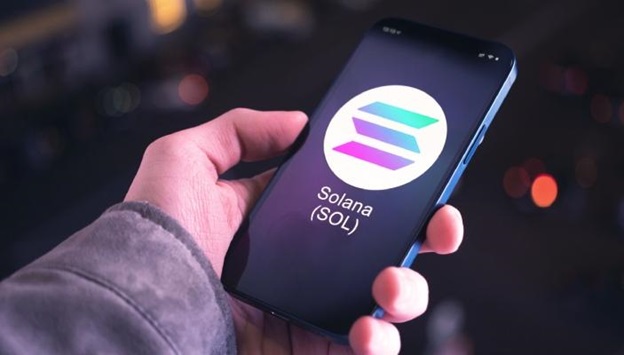
The Solana blockchain has been making waves in the decentralized finance (DeFi) space, particularly with the advent of trading bots that have revolutionized the way users interact with decentralized exchanges (DEXs). A recent development in this arena is the rise of Solana-based trading bots that have managed to surpass Uniswap in terms of 24-hour trading fees, a significant milestone that highlights the growing influence of Solana in the crypto market.
Solana’s high throughput and low transaction costs have made it an attractive platform for developers to build sophisticated trading bots. These bots are designed to automate trading strategies, allowing users to take advantage of market inefficiencies and execute trades at lightning-fast speeds. The integration of these bots within popular messaging apps like Telegram has further enhanced their accessibility, leading to a surge in their adoption.
One such bot, BONKbot, has seen a remarkable increase in user base and trading volume, boasting over $5 billion in trades. This bot leverages Jupiter DEX, a Solana-based DEX aggregator, to find the best available prices across various DEXs, providing users with optimal trading opportunities. Another notable bot is Trojan on Solana, which has also seen impressive trading volumes and user engagement.
Register for Tekedia Mini-MBA edition 19 (Feb 9 – May 2, 2026): big discounts for early bird.
Tekedia AI in Business Masterclass opens registrations.
Join Tekedia Capital Syndicate and co-invest in great global startups.
Register for Tekedia AI Lab: From Technical Design to Deployment (next edition begins Jan 24 2026).
The success of these bots is not without challenges. One of the primary concerns is the risk of technical failures. Trading bots rely on complex algorithms and require a stable internet connection and hardware to function correctly. Any disruption in these areas, such as server crashes or software glitches, can lead to missed trades or unintended transactions, potentially resulting in significant financial losses.
Another risk is over-optimization, also known as curve-fitting. Traders may fine-tune their bots to perform exceptionally well on historical market data. However, this can lead to an inability to adapt to new or unexpected market conditions, which can be detrimental when the bot is applied to live markets.
Security risks are also a major concern. Trading bots often require access to your trading accounts via API keys, which, if compromised, can lead to unauthorized access and potential theft of funds. Ensuring robust security measures and regularly updating bot software is crucial to mitigate these risks.
Market volatility is another factor to consider. Cryptocurrency markets, in particular, are known for their high volatility. Bots that are not designed to handle sudden market shifts may execute trades that result in losses rather than profits.
Lastly, there is the risk of regulatory changes. The legal landscape of cryptocurrency trading is still evolving, and new regulations can impact the effectiveness and legality of trading bots. Staying informed about regulatory changes is essential to ensure compliance and avoid potential legal issues.
The competition among trading bots is fierce, with many seeking to offer unique features and incentives to attract users. Real-time token data, sniper options, and limit buy and sell orders are just a few of the functionalities that these bots provide to enhance the trading experience.
The impact of Solana trading bots on the DeFi landscape is undeniable. They have not only provided users with new tools to navigate the crypto markets but have also challenged established platforms like Uniswap. As the DeFi ecosystem continues to evolve, it will be interesting to observe how these bots adapt and what new innovations they will bring to the table.
The flipping of Uniswap in 24-hour fees by Solana trading bots marks a pivotal moment in the DeFi sector. It underscores the dynamic nature of the crypto market and the continuous search for more efficient and user-friendly trading solutions. As the technology behind these bots’ advances, we can expect to see further disruptions and advancements in the way we trade digital assets.



